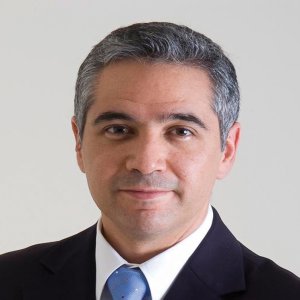Mexico Must Prove Its Technological Capabilities
STORY INLINE POST
There is no ghost in the machine that drives the automotive industry forward, but rather a highly specialized labor force, working in cutting-edge laboratories and centers, that brings true innovation to the table. As Mexico advances to higher added value activities and stages of technological development, it is crucial to identify the technological capacities of the industry. For María Verónica Orendain de los Santos, Director General of the Directorate of Heavy Industries and High Technology at the Ministry of Economy, facilitating the mutual exchange of knowledge between the industry and the federal government will make this possible.
A.T. Kearney carried out a study in April 2014 to identify Mexico’s technological potential by bringing together both the public and private sectors. According to Orendain de los Santos, such a study carried out by the federal government alone may have run the risk of lacking in- depth details, while such research being done within the industry might not have seen its findings shared with the public. “This collaboration proved to be successful since it makes it possible to distribute the information to all parties involved,” adds Orendain de los Santos. What distinguishes the Inventory of National Capacities for the Development of Automotive Technology is that associations like AMIA, ANPACT, AMDA, and INA all collaborated on it. 11 OEMs, 16 Tier 1 suppliers, 14 academic institutions, and nine R&D centers also took part in drafting the design of the study. The study identified the strengths, existing infrastructure, and the investment carried out by universities, public bodies, and private companies. Additionally, it traced the automotive R&D network spread across Mexico, the HR profile needed to achieve the added value projects and finally the areas of opportunity. “This study will give the industry the certainty of knowing exactly where the technological capabilities of Mexico are found, as well as in which segments and product types,” says Orendain de los Santos.
During the development of the study, A.T. Kearney sought to show Mexico’s technological capacity across all vehicle systems. These systems were divided in the following way: bodywork, electronics, powertrain, chassis, vehicle testing, materials, exteriors, and interiors. Countries with high technological development focus on all vehicle systems, while Mexico is within the top three main suppliers to the US for a wide range of such automotive systems. The inventory identified 106 design centers spread across all systems, with 16% directed to bodywork and 14% to electronics, while the least capacity was found in vehicle testing with only 5%. 247 laboratories were reported with two systems standing out, those focused on materials had a share of 21% and those working on powertrains represented 14%. The Mexican-run laboratories in the industry were more oriented towards material characterization and metallurgic analyses. The two automotive systems with the highest technological infrastructure were electronics and powertrains. According to the study, a broader Mexican focus on all systems improves the possibilities of capturing added value jobs, especially in specialized systems such as exterior design. As Orendain de los Santos points out: “Adopting an integral approach allows the development of all players within the industry, no matter how advanced the systems may be.”
Having identified the technological capabilities in each system, the study then proceeds to define how these are spread across the country. The states with the highest concentration of installations are Queretaro, Aguascalientes, and Guanajuato, with close to half of the installations in these states being laboratories. The number of design centers across Mexico exceeds 100, far outpacing the number of testing centers. An important finding was the willingness of industry players to collaborate with each other, a crucial element for rapid and integrated growth. “95% of the surveyed entities were willing to lend their equipment to third parties,” says Orendain de los Santos. “This is important, as when new investment projects come to Mexico, we can look across the industry to see if we have the necessary infrastructure available and position the project accordingly.” According to Orendain de los Santos, one of the valuable findings of this study is that Mexico’s network of R&D centers can be used as a technological platform by various players to carry out specific innovative processes. “The federal government places infrastructure at the service of the industry that is valuable and costly to implement on a private investment level,” she explains. The link between universities and the industry has been demonstrably tightening as a consequence of Mexico’s R&D growth, with 39% of projects carried out by R&D centers made possible through alliances with universities. The study predicts that these alliances will see their number of projects increase, leading to a more efficient transfer of knowledge and technology.




















